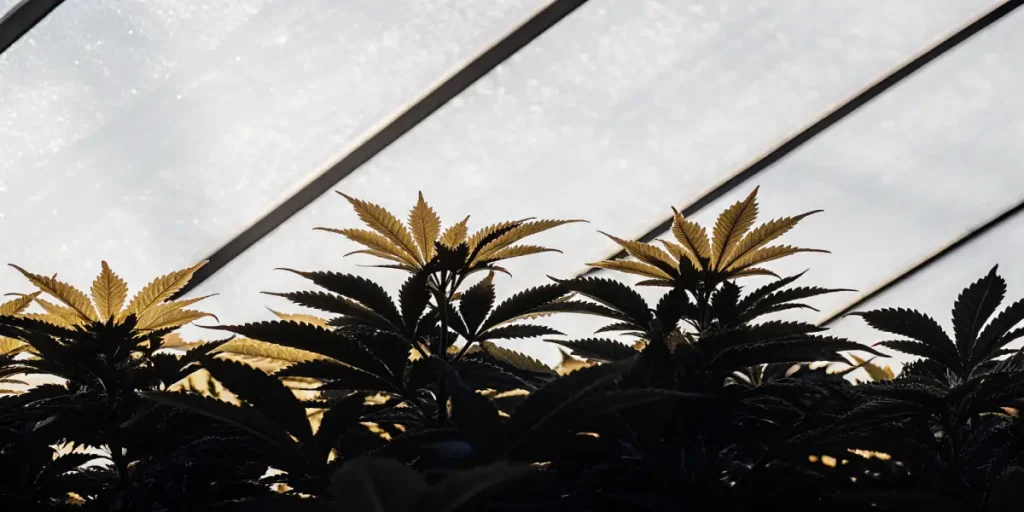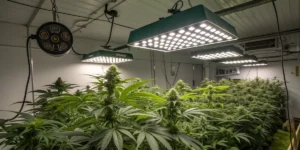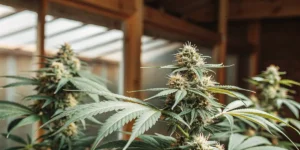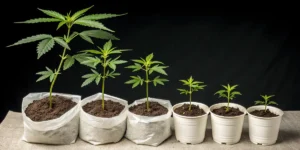Autoflower cannabis plants are a favorite among growers. They adapt well to various environments and have a faster growth cycle. Yet, for the best results, it’s crucial to control the temperature and humidity. Getting the ideal temp and humidity for autoflowers can make a big difference in your yield.
Many first-time growers wonder why their plants don’t flourish. Often, the answer lies in the climate. Autoflowers need specific conditions to thrive. Let’s dive into what makes the perfect climate for these resilient plants.
When it comes to autoflower strains, every detail counts. From temperature to humidity, each factor influences your plant’s health. With the right knowledge, you can create an environment where your autoflowers will bloom beautifully.
Temperature Needs for Autoflowers
Temperature is a critical factor in the growth of autoflowers. The best temperature and humidity for autoflowering strains will differ slightly depending on the stage of growth. During the day, aim for a temperature between 68°F and 77°F.
Nighttime temperatures should be cooler, around 59°F to 68°F. This drop mimics natural conditions and helps your plants rest. If your plants are too hot or cold, they may become stressed, affecting their growth and potency.
Maintaining the ideal temp and humidity for autoflowers is crucial for maximizing your yield. Consistently monitoring your grow area is essential. Invest in quality thermometers to track temperature changes and ensure your plants stay within the recommended range.
Remember that different autoflower strains might have slightly varying preferences. Research specific strains to understand their needs better. Strains like Northern Lights may handle cooler temperatures, while others might prefer a warmer environment.
Managing Temperature Fluctuations
Sudden changes in temperature can cause issues for autoflowers. Use a thermostat to keep the environment consistent. If you’re growing indoors, consider using a heater or air conditioner to maintain the perfect temp and humidity range for autoflowers.
For those growing outdoors, be mindful of weather changes. If a cold front is coming, protect your plants with a greenhouse or cover. On hot days, ensure they have shade and plenty of water.
Creating the optimal climate for autoflower cannabis growth means being proactive about potential temperature swings. Regularly check weather forecasts and adjust your setup accordingly. This foresight can prevent stress and keep your plants thriving.
An ideal environmental condition for autoflower marijuana involves more than just temperature. Ensure that your plants have enough space between them to allow for proper airflow. This helps in maintaining consistent temperatures throughout your grow area.
Humidity Levels for Optimal Growth
Humidity plays a significant role in the health of autoflowers. In the seedling stage, higher humidity is beneficial. Aim for around 60% to 70% to help the young plants absorb moisture.
As the plants mature, reduce humidity to around 40% to 50%. This helps prevent mold and mildew, which can destroy your crop. Proper humidity levels also contribute to the ideal environmental conditions for autoflower marijuana.
The perfect temp and humidity range for autoflowers varies with their growth stage. Seedlings thrive in higher humidity, while mature plants need drier conditions. Knowing these nuances can lead to a bountiful harvest.
Monitoring tools like hygrometers are invaluable for maintaining the recommended climate settings for indoor autoflowers. These devices offer real-time data, allowing you to make swift adjustments and keep your plants in peak condition.
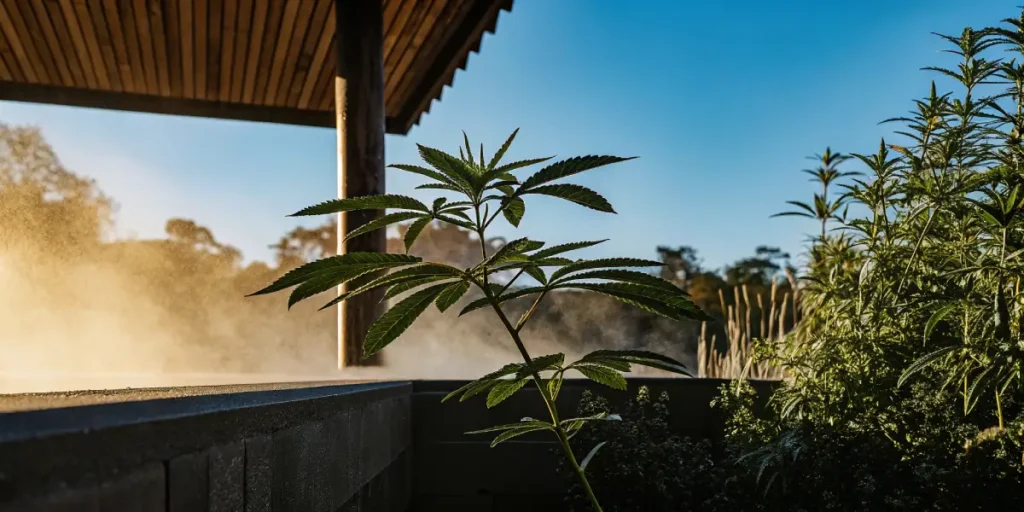
Controlling Humidity Indoors
Indoor growers can use a dehumidifier or humidifier to adjust levels. It’s also a good idea to monitor humidity with a hygrometer. This ensures your autoflowers are always in the recommended climate settings for indoor autoflowers.
Ventilation is key in controlling humidity. Good airflow prevents stagnant air and reduces the risk of mold. Fans and exhaust systems can help maintain the right balance.
Achieving the best temperature and humidity for autoflowering strains indoors requires diligence. Regularly clean and maintain your ventilation equipment to ensure it operates efficiently. This will help sustain the ideal temp and humidity for autoflowers.
For those seeking the ideal environmental conditions for autoflower marijuana, consider incorporating automated systems. These can regulate temperature and humidity with minimal intervention, creating a stable environment for your plants to flourish.
Real-Life Examples of Climate Management
Imagine you’re growing autoflowers in a small indoor setup. You notice the leaves curling, a sign of high heat and low humidity. Adjusting the airflow and adding a small humidifier can quickly resolve this.
For outdoor growers, sudden rainstorms can spike humidity. Using a greenhouse with ventilation can protect your plants from excess moisture. This is especially important for strains like Blueberry from Global Green Genetics, which thrive in controlled environments.
Real-life experiences highlight the importance of maintaining the optimal climate for autoflower cannabis growth. Many growers share stories of how a simple adjustment in humidity or temperature drastically improved their yields.
Documenting your climate management practices can be beneficial. Keeping a journal of changes and their effects on your plants allows you to refine your approach, ensuring the best possible environment for your autoflowers.
Practical Tips for Maintaining Ideal Conditions
Always have a plan for unexpected weather changes. Keep tools like thermometers and hygrometers handy. This will help you make quick adjustments when needed.
Regularly inspect your plants. Look for signs of stress, like wilting or discoloration. These can indicate that the climate needs adjusting.
When aiming for the recommended climate settings for indoor autoflowers, consider the layout of your grow space. Arranging plants to allow even distribution of light and air can prevent microclimates that lead to stress.
Experimenting with different environmental conditions can yield surprising results. Don’t be afraid to try new methods to find what best suits your specific strains, ensuring a successful grow cycle.
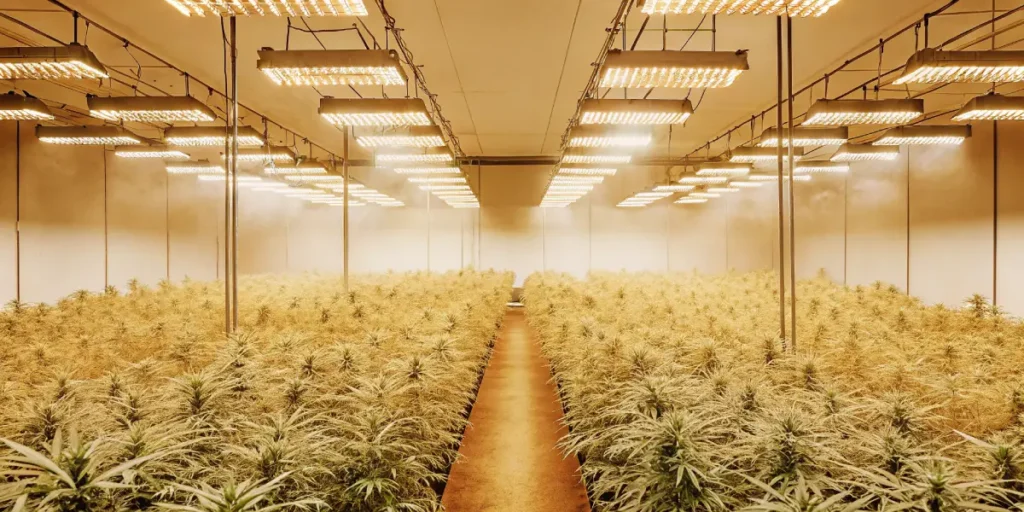
FAQs
What is the ideal temp and humidity for autoflowers during the seedling stage?
In the seedling stage, autoflowers thrive in a warm and humid environment. Aim for a temperature range between 68°F and 77°F during the day. At night, keep it slightly cooler, around 59°F to 68°F, to mimic natural conditions.
Humidity should be kept high, between 60% and 70%. This encourages healthy leaf development and helps the seedlings absorb moisture more efficiently. Proper climate control during this stage sets the foundation for a successful grow cycle.
For the best temperature and humidity for autoflowering strains during the seedling stage, consistency is key. Frequent monitoring will ensure that your plants remain in the ideal temp and humidity for autoflowers, promoting vigorous growth.
Utilize technology to maintain the perfect temp and humidity range for autoflowers. Smart sensors and automated systems can help maintain the necessary conditions, giving you peace of mind and healthy seedlings.
How can I prevent mold in my autoflower grow room?
Mold thrives in high humidity and stagnant air, making ventilation crucial. Use fans to maintain airflow and reduce moisture buildup. An exhaust system can also help remove humid air from the grow room.
Keep humidity levels within the recommended range, especially during the flowering stage. Using a dehumidifier can help manage excessive moisture. Regularly check your plants for signs of mold and remove any affected areas immediately.
Preventing mold requires vigilance and the right tools. Regularly calibrate your hygrometers and dehumidifiers to ensure accurate readings and maintain the ideal environmental conditions for autoflower marijuana.
Mold prevention is an ongoing process. By keeping your grow room clean and free of debris, you reduce the risk of fungal infections, ensuring a healthy environment for your autoflowers.
Why is it important to have different temperature settings for day and night?
Autoflowers, like other plants, benefit from a day-night temperature variation. This difference mimics natural conditions and signals the plant to perform certain biological processes. Cooler nighttime temperatures help the plant conserve energy and prepare for the next day.
Maintaining a day-night temperature fluctuation also reduces stress on your plants. Consistent temperatures without a natural drop can lead to overheating and slow growth. By adjusting settings, you encourage healthy development and robust flowering.
This variation is a core component of the optimal climate for autoflower cannabis growth. It helps simulate the natural environment, which is crucial for plant health and yield quality.
Knowing the necessity of this fluctuation will enable you to create the perfect temp and humidity range for autoflowers, enhancing both the quantity and quality of your harvest.
Can I grow autoflowers in a greenhouse?
Yes, autoflowers can thrive in a greenhouse setting. Greenhouses offer a controlled environment where you can manage temperature and humidity easily. They also protect plants from harsh weather conditions, extending the growing season.
Ensure your greenhouse has proper ventilation to prevent heat buildup and excessive humidity. Using fans and vents, you can create the optimal climate for autoflower cannabis growth, leading to impressive yields.
A greenhouse provides a unique opportunity to control the ideal temp and humidity for autoflowers. By fine-tuning your setup, you can maximize the growth potential of your plants, ensuring healthy and robust yields.
Consider integrating climate control technology within your greenhouse. Automated systems can help maintain the recommended climate settings for indoor autoflowers, minimizing manual intervention and maximizing efficiency.
What are some signs that my autoflowers are stressed due to poor climate conditions?
Stressed autoflowers may exhibit several symptoms. Leaves curling or wilting often signal heat stress or lack of humidity. Discolored leaves, particularly yellowing, can indicate improper temperature settings.
Mold or mildew presence is a clear sign of excessive humidity. Slow growth or halted flowering can also be indicators of climate issues. Regularly monitoring your plants and adjusting the environment can help prevent these problems.
Recognizing stress symptoms early can help you adjust the best temperature and humidity for autoflowering strains. Swift action can prevent long-term damage, keeping your plants healthy and productive.
Document any stress signs and your corrective actions. This record will serve as a valuable reference for future grows, ensuring you maintain the ideal temp and humidity for autoflowers consistently.

